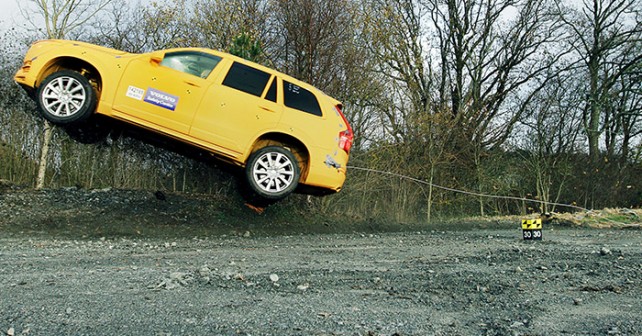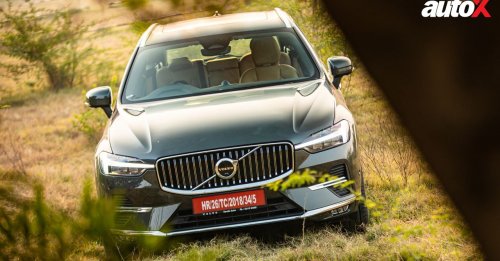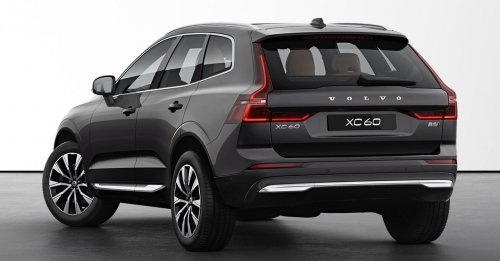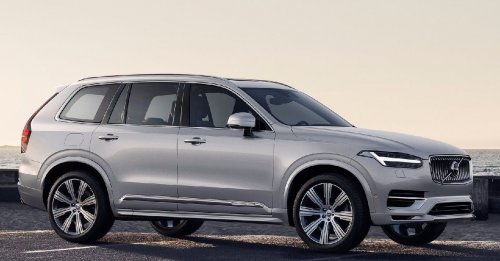As Volvo continues its second coming, the new XC90 remains key to the brand’s global success. We went to freezing Sweden to witness a crash test live, as well as to pick the brains of their experts about their all-new SUV, and, of course, talk about Volvo’s Vision 2020.
At a dinner event in Sweden, our host – a man of considerable experience and knowledge – told us an interesting fact about the Nordic God, Thor. According to him, the legend of Thor has slowly faded away from Swedish public memory, and, in fact, Thor is probably now more famous internationally than he is in Sweden. That tells you something about the power of cinema, and what a single movie can do for a character in terms of elevating him or her to worldwide fame. So, it comes as no surprise that Volvo is openly touting its design highlight in the headlights of the new XC90 – which now feature LED daytime running lamps that resemble the shape of the hammer of Thor, made famous by Chris Hemworth’s portrayal of the character in multiple Hollywood films.
To give you some background about the XC90, it’s been one of the most important products in Volvo’s product range – as it’s rated very highly and enjoys massive popularity in major markets like the US, where customers appreciate it for its practicality, usability, and, of course, safety. So, as Volvo moves on to its new Scalable Product Architecture (SPA) – on which the XC90 is the first vehicle to be based (all future Volvos will be based on the same platform) – and its range of new 4-cylinder engines, the XC90 is a critical product for the brand as the company lifts itself from a rough patch and seeks to re-establish itself in the cut-throat luxury vehicle market.
Other than the hammer highlight, the rest of the design of the second-generation XC90 is more evolutionary in nature – with the design cues of the older car having been reshaped to give the car a sharper look. The flat sides are quite striking, especially with the prominent shoulder line, which has been a design staple on Volvo’s for a while now. While the XC90 might not be too artistically inclined, it offers a serious, sturdy look that gives the car quite a bit of road presence. Let’s put it this way, the XC90 has an absolute no-nonsense look.
Focus on safety
The image on the left shows the various types of steel used in the construction of the XC90 to provide maximum possible safety
The interiors too offer big changes, and I must say they offer some fantastic detailing and the fit-and-finish is absolutely superb. Volvo has made radical changes as far as the controls of the various functions of the car is concerned, with its ‘Sensus’ user interface – which is being touted as the most advanced in-car control system in the world. So, the traditional buttons have been largely replaced by a touch-screen tablet like display mounted in the centre console, which features state-of-the-art technology and the capability to use Android and Apple devices via the touch screen. Additionally, the Sensus system also allows the use of cloud-based applications for various purposes – such as Internet radio, music streaming, and even finding and paying for parking. Moreover, the XC90 will also offer a 19-speaker Bowers & Wilkins audio system for music buffs. Interestingly, this audio system also includes the world’s first air-ventilated subwoofers in a car, which are integrated into the car’s body, and therefore turn the whole interior space into a subwoofer.
Of course, there can be no discussion about Volvo without talking about safety. Featuring the first glimpse of what Volvo calls its Vision 2020, in which the manufacturer aims to build cars with new technologies that ensure that cars don’t crash in the first place. In the short term, Volvo’s aim is to produce cars that ensure that no one is killed or seriously injured in a new car.
So, as part of this initiative, the XC90 features two world-firsts – one is the run-off road protection, which detects if the car is running off the road and automatically tightens the seat belts to keep the occupants in position. Plus, there is additional energy absorbing capability between the seat and seat frame to minimise the chances of spinal injury. The second is the auto brake system, which will apply the brakes automatically and bring the vehicle to a full stop to avoid a crash if the driver isn’t paying attention. The XC90 also features a host of other Volvo safety systems, such as the use of various types of steel in the vehicle to improve safety – including the use of quite expensive, but immensely strong, Boron steel (see the graphic for details).
As part of the presentation, we got to view one of the crash tests live to assess the functionality of the run-off road system – in which the car was driven by a dummy named, quite ironically, Thor. Needless to say, the crash test left us quite impressed, after all it’s not everyday you see a two-tonne-plus SUV flying in the air with all four wheels off the ground. The safety features of the XC90 worked perfectly, ensuring that Thor and his family were unharmed in the crash.
The other important aspect that Volvo has worked on is a brand-new line-up of engines, all of which are of 2-litre capacity in both petrol and diesel forms. Power outputs for the diesel versions range from 190 to 225bhp, while the petrol versions start from 254bhp. The range topping T8 model featuring a hybrid powertrain paired with a supercharged and turbocharged engine, which belts out 400bhp and has 600Nm of torque. And it can rocket you from standstill to 100km/h in just 5.9 seconds.
The new engines have also been optimised for fuel efficiency and low emissions. You can read more about the details of the technology elsewhere in the issue on a comprehensive piece on the new family of engines from Volvo, BMW and Jaguar Land Rover.
All said and done, the new XC90 and the various technology and safety initiatives reflects that things are progressing extremely well for the Swedish brand – especially after struggling through some tough years in the recent past. All I can say is, given all that the XC90 promises, we can’t wait to get behind the wheel of this all-new flagship from Volvo.






































Write your Comment